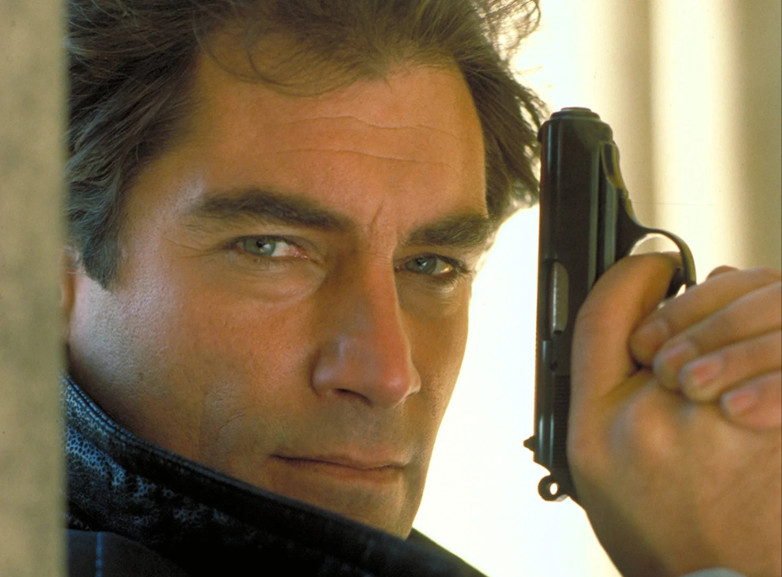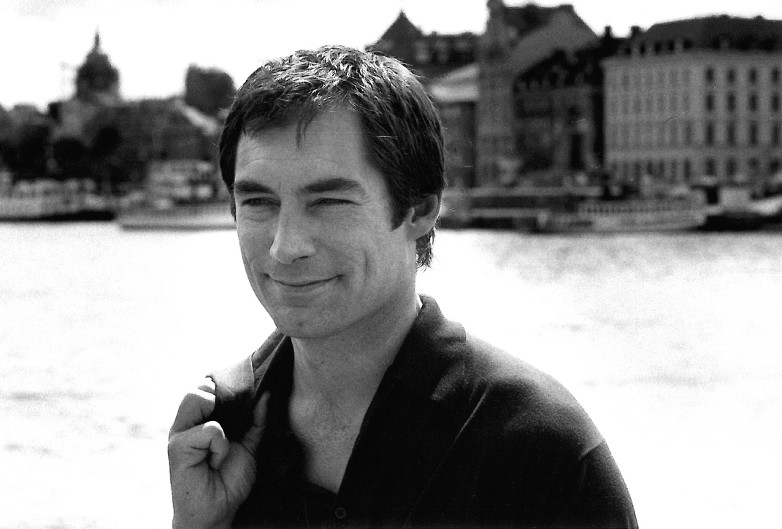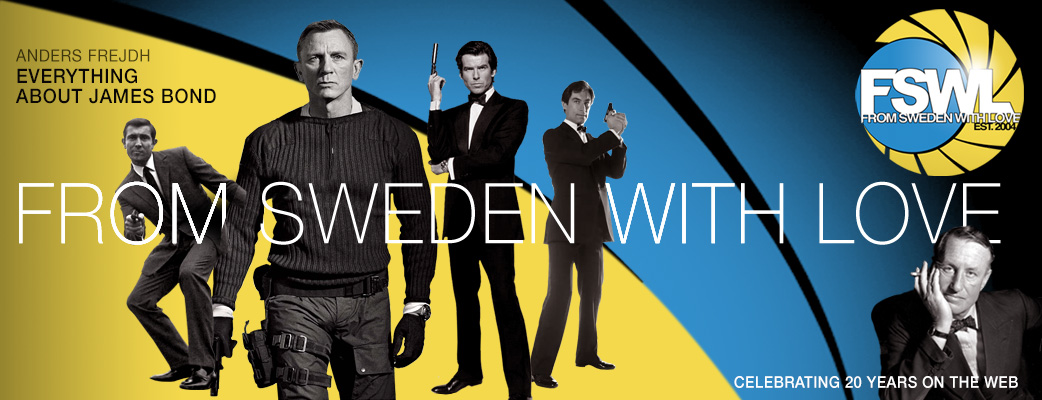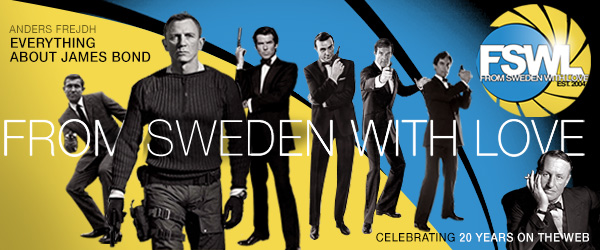Website last updated: 21-3-2024
Home
Book & Film reviews
Competitions
Event
FSWL Merchandise
In Memoriam
Interviews
James Bond 007 collection
James Bond 007 films
James Bond 007 games
James Bond 007 literature
James Bond 007 news
James Bond 007 products
James Bond 007 shop
James Bond 007 stars
James Bond Fan Clubs
Swedes in the Bond films
A reappraisal of Timothy Dalton's remarkable debut as James Bond 007
By: Ajay Chowdhury
Published:
2024-03-21
2024-03-21

“My favourite Bond actor is Timothy Dalton. I think he’s closest to the character in the book[s].” - Christopher Nolan, film director
The Dalton DEFENCE
When The Living Daylights was released in June 1987, a quiet revolution happened in the world of James Bond. All of a sudden, what opened up were new creative possibilities. A Bond film no longer had to be a circus or a pantomime but could attempt to return to its roots – that of the contemporary, international, Hitchcock-ian, romantic, mystery, intelligence thriller.
A story murky with then-recent Iran-Contra-gate topicality, this 15th Eon Bond film was a character-led tale of intrigue that was difficult to summarize for the press. Said press were already antagonized by a new leading man who kept an air of mystery about his personal life. In order to fully appreciate what Timothy Dalton brought to 007, one would have to have been a James Bond fan before he was cast. The long and successful reign of Roger Moore was an achievement in itself but the Press had been rather spoilt by 14 years of media-friendly frolics. Dalton’s distance did not endear him to them. Their view was, “It’s only a Bond film, lighten up.”
However, for the first time, the actor playing Bond had read all 14 Fleming Bond books, researched and knew about his literary father. He allegedly kept a copy of John Pearson’s Fleming biography on his bedside table. Dalton took the role seriously, researching and exploring the text like the multitude of classic characters he had previously taken on. The actor had a keen sense of what he wanted to achieve: something different yet classic.
The Dalton DEBUT
Upon his announcement as Bond on 6th August 1986, Dalton was a relatively unknown, leading man/working actor. However, this became an important aspect to the thrill of his debut. This lack of knowledge about the actor made his Bond unpredictable. On first viewing, the Pre-Title Sequence and the defection in Bratislava were dangerous, involving and atmospheric. When trailing Kara and meeting in her flat, Bond was intense – his careful phrasing making their conversation a chess game of circumstance. When Bond interrogates Pushkin, it is tough and ruthless and you believe Bond will execute in cold blood. When Bond is beaten in the Afghan jail, there’s no pithy comeback. Just when one thought a one-liner was coming, it didn’t. To an audience weaned on 14 years of quippery, this was a revelation. Out of context now, these grace notes - and their impact - are lost.
In The Living Daylights, few scenes are written to showcase character. Character is revealed through the plot. Dalton presents Bond as a reluctant yet ruthless romantic protagonist. A man of action and energy, living on the edge, Dalton is in the centre, running, jumping, fighting and shooting with conviction. Again, after the recent outings of his predecessor, where Roger Moore's physicality was rarely showcased, the fourth EON Bond's kinetic energy was remarkable.
The pre-title sequence for The Living Daylights starring Timothy Dalton as Ian Fleming's James Bond
On careful viewing, Dalton details his performance with nuggets of information and emotion:
a) cigarette smoke escaping on hearing Koskov’s report of Smiert Spionam – hot air,
b) rigid and economical movement in the pipeline scouring pig launch bay,
c) martial bearing in M’s office,
d) the regrasping of the Walther grip in the Pushkin interrogation,
e) drinking whisky with Leiter,
f) his protectiveness of Kara in Afghanistan,
g) frustration in the Hercules as he tries to communicate with Kara,
h) frantic grip on the Hercules controls to evade oncoming, landing plane.
Dalton’s performance conveys the effort of survival, the pain of being hit, the exhilaration of escape, and the spoils of seduction.
He went back to the humanity of the man from the novels and injected as much of that man as the script would allow. In M’s office, a cut scene containing a brief rumination on accidie - often used by Fleming denoting spiritual sloth - allowed Dalton to inject some overt world-weariness into his Bond. Dalton had wisely asked for one-liners to be removed and his Bond is a taciturn intelligence operative. Marketed as “The Most Dangerous Bond... Ever”, Dalton’s lupine looks and careful publicity heralded a finely wrought, unsurpassed approach to the characterization of Ian Fleming’s James Bond.

Timothy Dalton in Stockholm 1987 to promote The Living Daylights. Photo from Anders Frejdh's private collection.
The Dalton DELIVERY
The film is not without humour but it is a different sort of humour to that of previous Bonds. Especially the Roger Moore era. In The Living Daylights, there is little outright comedy. This has been replaced by comic relief. Brief light mood relieving moments, perfectly in keeping with the darker, moodier, thriller tone. One doesn’t laugh, one smiles:
1) The gag of landing on the boat in the Pre-Title Sequence.
2) Bond: “Why me?” Saunders: “He’s under the *impression* you're the best.”
3) Koskov’s overdone embrace of Bond.
4) “Section 26, paragraph 5, I’m sure you understand.”
5) “You’re the first…”
6) The classic “Why didn’t you learn to play the violin” jump cut.
7) “Salt corrosion”
8 )“We’ve nothing to declare” “Except a cello-lo-lo-lo…”
9) The exasperated fair ground worker’s “No more” after Bond’s sharp shooting bags yet another prize.
10) “Kara, we’re in the middle of a Russian airbase…”
11) “Are you calling me a horse’s arse…?”
All these moments emanate from the humanity of Bond and give The Living Daylights a gentler tone, complementing the harder edge to the character and the deeper romance. However, after 14 years a broader, more predictable, pantomime humour was expected. When this surfaced in the film occasionally, it highlighted Dalton’s weakness for flippancy e.g. “Amazing this modern safety glass”. The script’s major weakness was a lack of well-written, witty humour. Dalton is adept at playing darkly humorous characters (Framed, The Rocketeer) but he is seemingly not a natural improviser and cannot conjure what is not on the page. The new, subtler approach was lost on some audiences.
The Dalton DNA
However, Timothy Dalton was simply too good an actor and presence for the story and dialogue and general direction of the film. A more linear, more direct storyline would have showcased his particular talents for capturing the spirit and essence of the character of James Bond found in the writing of Ian Fleming. As Barbara Broccoli has noted, Dalton was simply ahead of his time. There is Dalton DNA running through Daniel Craig's 007 like writing through rock candy.
Whilst Bond is at a critical and commercial and credible all time high, hopefully new eyes will be cast upon Timothy Dalton's interpretation of James Bond. And perhaps those new eyes might understand what a pivotal 007, Dalton proved to be.
Written by Ajay Chowdhury. Copyright © 2024 From Sweden with Love. All rights reserved.
Tags:
#ajay_chowdhury
#articles
#birthdays
#iskallt_uppdrag
#licence_to_kill
#timothy_dalton
Tweet








